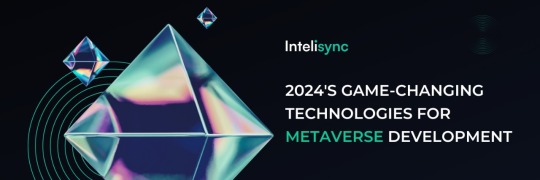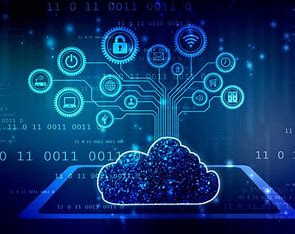#edge computing for IoT security
Explore tagged Tumblr posts
Text
The AIoT Revolution: How AI and IoT Convergence is Rewriting the Rules of Industry & Life

Imagine a world where factory machines predict their own breakdowns before they happen. Where city streets dynamically adjust traffic flow in real-time, slashing commute times. Where your morning coffee brews automatically as your smartwatch detects you waking. This isn’t science fiction—it’s the explosive reality of Artificial Intelligence of Things (AIoT), the merger of AI algorithms and IoT ecosystems. At widedevsolution.com, we engineer these intelligent futures daily.
Why AIoT Isn’t Just Buzzword Bingo: The Core Convergence
Artificial Intelligence of Things fuses the sensory nervous system of IoT devices (sensors, actuators, smart gadgets) with the cognitive brainpower of machine learning models and deep neural networks. Unlike traditional IoT—which drowns in raw data—AIoT delivers actionable intelligence.
As Sundar Pichai, CEO of Google, asserts:
“We are moving from a mobile-first to an AI-first world. The ability to apply AI and machine learning to massive datasets from connected devices is unlocking unprecedented solutions.”
The AIoT Trinity: Trends Reshaping Reality
1. Predictive Maintenance: The Death of Downtime Gone are days of scheduled check-ups. AI-driven predictive maintenance analyzes sensor data intelligence—vibrations, temperature, sound patterns—to forecast failures weeks in advance.
Real-world impact: Siemens reduced turbine failures by 30% using AI anomaly detection on industrial IoT applications.
Financial upside: McKinsey estimates predictive maintenance cuts costs by 20% and downtime by 50%.
2. Smart Cities: Urban Landscapes with a Brain Smart city solutions leverage edge computing and real-time analytics to optimize resources. Barcelona’s AIoT-powered streetlights cut energy use by 30%. Singapore uses AI traffic prediction to reduce congestion by 15%.
Core Tech Stack:
Distributed sensor networks monitoring air/water quality
Computer vision systems for public safety
AI-powered energy grids balancing supply/demand
3. Hyper-Personalized Experiences: The End of One-Size-Fits-All Personalized user experiences now anticipate needs. Think:
Retail: Nike’s IoT-enabled stores suggest shoes based on past purchases and gait analysis.
Healthcare: Remote patient monitoring with wearable IoT detects arrhythmias before symptoms appear.
Sectoral Shockwaves: Where AIoT is Moving the Needle
🏥 Healthcare: From Treatment to Prevention Healthcare IoT enables continuous monitoring. AI-driven diagnostics analyze data from pacemakers, glucose monitors, and smart inhalers. Results?
45% fewer hospital readmissions (Mayo Clinic study)
Early detection of sepsis 6+ hours faster (Johns Hopkins AIoT model)
🌾 Agriculture: Precision Farming at Scale Precision agriculture uses soil moisture sensors, drone imagery, and ML yield prediction to boost output sustainably.
Case Study: John Deere’s AIoT tractors reduced water usage by 40% while increasing crop yields by 15% via real-time field analytics.
🏭 Manufacturing: The Zero-Waste Factory Manufacturing efficiency soars with AI-powered quality control and autonomous supply chains.
Data Point: Bosch’s AIoT factories achieve 99.9985% quality compliance and 25% faster production cycles through automated defect detection.
Navigating the Minefield: Challenges in Scaling AIoT
Even pioneers face hurdles:ChallengeSolutionData security in IoTEnd-to-end encryption + zero-trust architectureSystem interoperabilityAPI-first integration frameworksAI model driftContinuous MLOps monitoringEnergy constraintsTinyML algorithms for low-power devices
As Microsoft CEO Satya Nadella warns:
“Trust is the currency of the AIoT era. Without robust security and ethical governance, even the most brilliant systems will fail.”
How widedevsolution.com Engineers Tomorrow’s AIoT
At widedevsolution.com, we build scalable IoT systems that turn data deluge into profit. Our recent projects include:
A predictive maintenance platform for wind farms, cutting turbine repair costs by $2M/year.
An AI retail personalization engine boosting client sales conversions by 34%.
Smart city infrastructure reducing municipal energy waste by 28%.
We specialize in overcoming edge computing bottlenecks and designing cyber-physical systems with military-grade data security in IoT.
The Road Ahead: Your AIoT Action Plan
The AIoT market will hit $1.2T by 2030 (Statista). To lead, not follow:
Start small: Pilot sensor-driven process optimization in one workflow.
Prioritize security: Implement hardware-level encryption from day one.
Democratize data: Use low-code AI platforms to empower non-technical teams.
The Final Byte We stand at an inflection point. Artificial Intelligence of Things isn’t merely connecting devices—it’s weaving an intelligent fabric across our physical reality. From farms that whisper their needs to algorithms, to factories that self-heal, to cities that breathe efficiently, AIoT transforms data into wisdom.
The question isn’t if this revolution will impact your organization—it’s when. Companies leveraging AIoT integration today aren’t just future-proofing; they’re rewriting industry rulebooks. At widedevsolution.com, we turn convergence into competitive advantage. The machines are learning. The sensors are watching. The future is responding.
“The greatest achievement of AIoT won’t be smarter gadgets—it’ll be fundamentally reimagining how humanity solves its hardest problems.” — widedevsolution.com AI Lab
#artificial intelligence#predictive maintenance#smart city solutions#manufacturing efficiency#AI-powered quality control in manufacturing#edge computing for IoT security#scalable IoT systems for agriculture#AIoT integration#sensor data intelligence#ML yield prediction#cyber-physical#widedevsolution.com
0 notes
Text
Smart Connectivity Unleashed: A New Era with Bluetooth Mesh Networking

Bluetooth Mesh Networking — where smart buildings, industrial zones, and urban systems communicate wirelessly in a decentralized, intelligent mesh. From synchronized lighting to real-time data flow between devices, the network showcases seamless automation, edge intelligence, and secure scalability. With minimal latency and maximum efficiency, this image represents how MeshTek empowers smarter cities and industries through advanced mesh technology.
#bluetooth mesh networking#smart infrastructure#IoT connectivity#MeshTek#decentralized communication#smart city solutions#industrial IoT#edge computing#real-time automation#smart lighting#wireless technology#BLE mesh#energy-efficient systems#OTA updates#AI-powered IoT#scalable networks#intelligent automation#IoT security#future-ready technology#connected ecosystems
0 notes
Text
Network Operating Systems Market: Trends, Innovations, and Future Outlook
In today’s digital-first world, where enterprises and service providers rely on highly connected infrastructures, the role of Network Operating Systems (NOS) has become more critical than ever. From managing internal communications to supporting global cloud-based applications, NOS platforms are at the core of networking architecture. As demands grow, NOS solutions must evolve—emphasizing…

View On WordPress
#a network operating system#ai#artificial intelligence#best network os#business#Business Intelligence#computer network operating system#Digital Transformation#edge computing#Information Security#Information Technology#iot#IT Infrastructure#Machine Learning#ML#Network Automation#network innovation#network management in operating system#Network Monitoring#Network Operating Systems#network scalability#Network Security#NOS#smart networks
0 notes
Text
Beyond the Buzz: How IoT Redefines Business Operations

Moving from Hype to Reality
IoT has moved from being a futuristic idea to a practical solution that businesses use daily to improve operations and achieve sustainable growth. Though much of the discussion around IoT is about its potential, the real value that it presents is in how companies can use the technology to solve real-world problems.
Today, IoT is no longer a buzzword; it’s a necessity for any business looking to remain competitive and agile in a dynamic global environment. With its power to integrate devices, data, and processes, IoT helps businesses achieve efficiencies, improve customer satisfaction, and create new revenue streams. In this blog post, we explore how IoT is changing business operations across industries and what companies need to do to maximize its potential.
How Tudip Technologies Redefines IoT Solutions
Tudip Technologies empowers businesses with IoT solutions that tackle complex operational challenges and drive measurable outcomes.
Our Specialized Approach:
Edge Computing Integration: Enabling faster data processing closer to devices for real-time responsiveness.
IoT Ecosystem Design: Creating scalable ecosystems that adapt to changing business needs.
Sustainability-Focused Solutions: Tailoring IoT frameworks that align with environmental goals.
Example: Tudip partnered with a logistics provider to implement IoT-powered edge analytics, reducing data processing times by 60% and improving delivery accuracy across global operations.
Key Takeaways: Turning IoT Into Operational Strength
Invest in Scalable Solutions: Ensure your IoT systems can grow alongside your business needs.
Prioritize Security: Robust cybersecurity measures arToday, IoT is no longer a buzzword; it’s a necessity for any business looking to remain competitive and agile in a dynamic global environment. With its power to integrate devices, data, and processes, IoT helps businesses achieve efficiencies, improve customer satisfaction, and create new revenue streams. In this blog post, we explore how IoT is changing business operations across industries and what companies need to do to maximize its potential.
Redefining Operational Efficiency with IoT
1. Predictive Analytics: Smarter Urban Operations with IoT
IoT is revolutionizing energy management by integrating renewable energy sources into business operations. Smart systems analyze usage patterns and adjust power drawn from solar, wind, or traditional grids in real time.
Optimized Renewable Usage: IoT ensures renewable energy is used efficiently by monitoring supply-demand gaps.
Grid Stability: Balances energy loads to prevent outages during peak hours.
Sustainability Goals: Helps businesses achieve net-zero emissions by prioritizing clean energy consumption.
Example: A technology campus integrated IoT in optimizing its solar energy consumption and reduced dependence on traditional grids by 40%, with a significant reduction in operational costs
2. Energy Management: Advancing Renewable Solutions
Predictive analytics powered by IoT is transforming urban infrastructure. Cities can now monitor critical assets like bridges, roads, and utilities in real time, ensuring timely maintenance and preventing costly failures.
Public Safety: Early detection of infrastructure stress minimizes risks to citizens.
Cost Efficiency: Avoiding large-scale repairs reduces budget overruns for municipalities.
Sustainability: Proactive maintenance extends the lifespan of assets, reducing waste.
3. Automation Excellence: Better Disaster Response Logistics
IoT-driven automation is transforming how disaster response occurs—getting aid to where it is needed, faster and more efficiently.
Real-Time Inventory Management: Monitors relief inventory and ensures its proper distribution to areas of greatest need.
Smart Transportation: Optimizes routes for rescue and supply vehicles during crises.
Collaboration Across Agencies: IoT systems enable seamless communication between response teams.
Example:In a recent hurricane, one global aid organization leveraged IoT-connected drones to survey damage and automate the delivery of supplies, resulting in a 50% faster response time.
Overcoming Common IoT Challenges
1. Integration of IoT with Existing Systems
One of the biggest hurdles businesses face is integrating IoT solutions with legacy systems. Compatibility issues can hinder seamless data exchange and functionality. Solution: Use a flexible IoT platform with built-in interoperability; make sure it provides APIs for smooth integration. Careful planning and phased implementation may also reduce disruptions to a minimum.
2. Data Security and Privacy
IoT ecosystems are all about continuous data gathering and transmission, which increases exposure to cyber threats. The security of sensitive information is the foundation of trust with stakeholders.
Solution: Implement robust encryption protocols, regularly update security measures, and educate employees on cybersecurity best practices.
3. Adapting to Rapid Technological Changes
The rapid rate of innovation in IoT can make it challenging for businesses to adapt to new developments and keep their systems current. Solution: Collaborate with technology providers that offer scalable solutions and ongoing support to adapt to emerging trends without overhauling existing systems.
How IoT Drives Operational Transformation
1. Enhancing Decision-Making with Real-Time Insights
IoT provides companies with real-time data that enables informed decision-making. Whether it is revising supply chain strategies or optimizing production schedules, IoT ensures that companies can act quickly and confidently.
Dynamic Adaptability: Businesses can change their strategies according to up-to-date information and stay responsive to market demand.
Improved Collaboration: IoT systems enable better communication across departments, enabling coordinated efforts.
2. Creating Value Through Customization
IoT’s ability to collect granular data allows businesses to tailor their offerings and services to meet specific customer needs. Personalization not only enhances user experience but also builds stronger customer relationships.
e non-negotiable in today’s interconnected world.
Focus on Outcomes: Use IoT to achieve specific goals, whether it’s reducing costs, enhancing customer satisfaction, or achieving sustainability targets.
Conclusion: Moving Beyond the Buzz
IoT has evolved into an indispensable solution, reshaping how businesses optimize operations and achieve sustainable growth. By addressing real-world challenges and delivering actionable insights, IoT enables companies to stay competitive and adaptive.
To fully realize the benefits of IoT, businesses must focus on integrating flexible solutions, safeguarding data, and aligning technology with strategic objectives. With the right approach, IoT becomes more than a technological innovation—it becomes a cornerstone of operational excellence and sustainable growth.
Click the link below to learn more about the blog Beyond the Buzz: How IoT Redefines Business Operations
https://tudip.com/blog-post/beyond-the-buzz-how-iot-redefines-business-operations/
#Tudip#IoT#Internet of Things#business operations#predictive analytics#automation#real-time data#edge computing#smart infrastructure#energy management#renewable energy#sustainability#operational efficiency#cybersecurity#data security#interoperability#digital transformation#scalability#AI-driven insights#machine learning#supply chain optimization#disaster response#smart cities#industrial IoT#connected devices#enterprise IoT#cloud computing#IoT platforms#remote monitoring#predictive maintenance
0 notes
Text
#innovators#smartcities#industrialautomation#and edge computing#security#and sustainability#IoTSparks#Valencia2025#IoT#SmartTech#Innovation#AI#EdgeComputing#electronicsnews#technologynews
0 notes
Text
#IoT architecture#IoT architecture layers#IoT layers#Edge computing in IoT#IoT data processing#IoT security#Legacy IoT
0 notes
Text
🌐 The Impact of Cloud Computing on Business Scalability and Innovation
Cloud computing has revolutionized the way businesses operate, providing scalable, on-demand access to IT resources without the need for costly hardware investments. With cloud solutions, companies can deploy applications, store and analyze data, and enhance collaboration in a secure, flexible environment. This article explores the transformative power of cloud computing, its benefits for…
#AI Integration#Business Continuity#Cloud Computing#Data security#Edge computing#IoT#SaaS#Scalability#Telecommunications
0 notes
Text
2024's Game-Changing Technologies for Metaverse Development

Picture a universe where virtual and physical worlds blend seamlessly, allowing you to interact with digital elements in real-time. As 2024 draws near, groundbreaking technologies are shaping this metaverse, making such interactions more immersive and dynamic than ever.
The metaverse, an expansive network of virtual environments, is evolving rapidly as we approach 2024, driven by several key technologies. Virtual Reality (VR) and Augmented Reality (AR) are at the forefront, enabling immersive experiences that blend the physical and digital worlds. VR technology has advanced significantly, offering users enhanced graphics, realistic simulations, and responsive feedback that create fully immersive digital environments.
AR enhances the physical world by overlaying digital information, enriching experiences in retail, healthcare, and entertainment through interactive and engaging environments.
Blockchain technology is essential for the metaverse, providing a secure and transparent method for managing digital assets and transactions. Non-fungible tokens (NFTs) allow users to own unique digital assets like virtual real estate and art, while smart contracts facilitate automated and secure transactions. The decentralized nature of blockchain promotes trust and reliability, making it a crucial component of the metaverse's infrastructure.
Artificial Intelligence (AI) further enhances user experiences by creating intelligent virtual agents, personalized interactions, and realistic simulations. AI-driven non-player characters (NPCs) provide engaging and adaptive experiences, and AI technologies enable natural language processing and speech recognition for seamless communication between users and virtual environments.
Edge computing and 5G technology are critical for the seamless operation of the metaverse. By bringing data processing closer to users, edge computing reduces latency and improves the responsiveness of virtual environments. 5G networks provide the high-speed internet required for real-time interactions, supporting scalable and complex virtual environments.
The Internet of Things (IoT) and spatial computing further enhance the metaverse by capturing physical movements and translating them into virtual actions, creating realistic and immersive experiences.
Elevate your business with Intelisync's cutting-edge metaverse solutions. Reach out to Intelisync today and learn how our advanced technologies in VR, AR, AI, and blockchain can revolutionize your operations, enhance customer engagement, and drive your Learn more...
#AI-driven NPCs#AR/VR for interactive product experiences#Artificial Intelligence (AI)#Augmented Reality (AR)#Blockchain#blockchain for secure transactions#Blockchain Technology#Edge Computing and 5G Technology#How Intelisync Uses this Technology for Growing Client Business#Increase in Engagement#Intelisync’s Metaverse Solution for Retail Business#Internet of Things (IoT) and Spatial Computing#IoT devices#Market Expansion#Metaverse Development#Metaverse development company#metaverse game development#Operational Efficiency#Personalization with AI#Sales Growth#Secure Transactions with Blockchain#smart contracts#social VR platforms and games.#Top 5 Technologies for Metaverse Development in 2024#Virtual Reality (VR)#Virtual Reality (VR) and Augmented Reality (AR)#Virtual Showroom#What is the Metaverse?
0 notes
Text
Emerging Tech Trends in the Internet of Things (IoT)
Introduction
The Internet of Things (IoT) is transforming our world by connecting devices and enabling smarter, more efficient interactions. In everything from smart homes to industrial automation, the IoT is leading a revolution in our living and working environments. In this article, TechtoIO explores the emerging tech trends in IoT, highlighting the innovations and advancements that are shaping the future. Read to continue link
#Innovation Insights#Tags5G IoT#AI in IoT#autonomous vehicles IoT#big data IoT#edge computing IoT#future of IoT#IIoT#industrial IoT#Internet of Things#IoT data analytics#IoT healthcare#IoT innovations#IoT security#IoT technology#IoT trends#smart cities IoT#smart homes#wearable IoT#Technology#Science#business tech#Adobe cloud#Trends#Nvidia Drive#Analysis#Tech news#Science updates#Digital advancements#Tech trends
1 note
·
View note
Text
10 Most important Technologies that IT Advisors use to Navigating the Future of Information Technology
Introduction as IT Advisors In the dynamic realm of Information Technology (IT), staying ahead requires a powerful arsenal of cutting-edge technologies. IT advisors, the guiding force behind digital transformations, leverage a spectrum of tools to optimize operations, enhance security, and propel their clients into the future. In this exploration, we’ll delve into the tech landscape that…

View On WordPress
#5G technology#AI and machine learning#automation#Blockchain#cloud computing#collaboration tools#connectivity#cybersecurity#data analytics#digital transformation#edge computing#information security#Internet of Things (IoT)#IT Advisors#IT infrastructure#predictive analysis#Robotic Process Automation (RPA)#Technologies#technology landscape#virtualization
1 note
·
View note
Text
Revolutionizing Industries with Smart IoT App Solutions

The powerful capabilities of a leading IoT App Development Company, showcasing smart city controls, industrial sensors, agriculture monitoring, and wearable health trackers — all interconnected through advanced mobile applications. MeshTek empowers businesses with scalable, secure, and intelligent IoT app development that drives real-time automation and seamless device communication.
#IoT App Development Company#Smart City Automation#Industrial IoT Solutions#Agriculture IoT Monitoring#Wearable Health Tech#Mobile IoT Applications#Bluetooth IoT Connectivity#Scalable IoT Networks#Real-Time Device Communication#Edge Computing IoT#IoT System Integration#Connected Infrastructure#Smart App Development#Secure IoT Platforms#meshtek
0 notes
Text
QKS Group's Vision for the Future of IoT and Edge Computing Solutions
The Internet of Things (IoT) market has undergone significant growth, becoming a cornerstone of technological transformation across industries. IoT refers to the interconnection of physical devices, sensors, and systems that communicate over the internet, enabling the collection, sharing, and analysis of data. The proliferation of IoT devices is expected to grow exponentially, driven by…
#artificial intelligence#Cloud Computing#cloud platforms#Competitive Intelligence#edge computing#iot#IoT and edge integration#IoT applications#IoT devices#IoT growth#IoT market#IoT Security
0 notes
Text
Optimize the data & business insights acquired from your connected devices by swiftly expanding the apps with Teksun’s IoT Cloud Integration. Connect with us today with these services and all programmable modules at www.teksun.com
#Cloud Integration#IoT Devices#Data Management#Real-time Data#Cloud Services Data Analytics#Device Connectivity#IoT Protocols#Edge Computing#IoT Security
0 notes
Text

IoT Network Protocols (e.g., MQTT, CoAP)
Harness robust IoT network protocols, including MQTT and CoAP, for seamless connectivity!
#IoT software development services#embedded software development services#IoT device selection#IoT strategy consultation#IoT data visualization tools#edge computing for IoT#IoT network protocols (e.g.#MQTT#CoAP)#IoT user experience design#AI in IoT solutions#IoT and blockchain integration#IoT app design services#IoT app development#IoT device integration#IoT data analytics services#IoT security solutions#custom IoT application development#enterprise IoT services#industrial IoT solutions#IoT firmware development#IoT cloud integration#IoT connectivity solutions#mobile app development#software development#TechAhead Corp#TechAheadCorp#techaheadcorp.com
0 notes
Text
Demystifying cloud computing: the future of technology.

In today's rapidly evolving digital world, cloud computing is not just a technology trend-cloud computing is the foundation of today's IT infrastructure. from streaming your favourite Netflix show to collaborating on Google Docs.
what is cloud computing?

Cloud computing is the provision of computing services including the servers, databases, storage, networking, software, analytics, and intelligence over the internet to offer faster innovation, flexible resources, and economies of scale.
Types of cloud services.

Security in the cloud.
Security is the top priority. cloud vendors employ encryption, firewalls, multi-factor authentication, and periodic audits to secure data. Organizations must, however, set up and manage secure access.
The future of cloud computing.

The future of cloud computing is being defined by a number of ground breaking trends that are changing the way data and applications are processed. Edge computing is moving computation near data sources to decrease latency and improve real-time processing for IoT and mobile applications.
7 notes
·
View notes
Text
Web to Mobile: Building Seamless Apps with .NET"
.NET is a effective, flexible, and open-supply developer platform created with the aid of Microsoft. It enables the creation of a huge range of applications—from computing device to cellular, net, cloud, gaming, and IoT. Over the years, .NET has evolved substantially and has become one of the maximum extensively used frameworks inside the software improvement enterprise.
Dot Net Programming Language

A Brief History of .NET
The .NET Framework become first delivered through Microsoft in the early 2000s. The original cause turned into to offer a steady item-oriented programming surroundings regardless of whether code became stored and finished locally, remotely, or via the internet.
Over time, Microsoft developed .NET right into a cross-platform, open-supply framework. In 2016, Microsoft launched .NET Core, a modular, high-performance, cross-platform implementation of .NET. In 2020, the company unified all its .NET technologies beneath one umbrella with the discharge of .NET five, and later persisted with .NET 6, .NET 7, and past.
Today, the unified platform is actually called .NET, and it allows builders to build apps for Windows, macOS, Linux, iOS, Android, and greater using a single codebase.
Key Features of .NET
1. Cross-Platform Development
One of the maximum tremendous features of present day .NET (publish .NET Core) is its ability to run on a couple of platforms. Developers can construct and deploy apps on Windows, Linux, and macOS with out enhancing their codebases.
2. Multiple Language Support
.NET supports numerous programming languages, together with:
C# – the maximum extensively used language in .NET development
F# – a purposeful-first programming language
Visual Basic – an smooth-to-analyze language, regularly used in legacy programs
This multilingual capability allows developers to pick out the nice language for their precise use cases.
3. Extensive Library and Framework Support
.NET offers a comprehensive base magnificence library (BCL) and framework libraries that aid the whole lot from record studying/writing to XML manipulation, statistics get entry to, cryptography, and extra.
Four. ASP.NET for Web Development
ASP.NET is a part of the .NET platform specially designed for net improvement. ASP.NET Core, the cross-platform model, permits builders to build scalable internet APIs, dynamic web sites, and actual-time packages the usage of technology like SignalR.
5. Rich Development Environment
.NET integrates seamlessly with Visual Studio, one of the most function-wealthy integrated development environments (IDEs) available. Visual Studio offers capabilities together with IntelliSense, debugging tools, challenge templates, and code refactoring.
6. Performance and Scalability
.NET is thought for high performance and scalability, especially with its guide for asynchronous programming using async/wait for and its Just-In-Time (JIT) compilation.
7. Secure and Reliable
.NET presents sturdy safety features, including code get entry to security, role-based protection, and cryptography training. It also handles reminiscence management thru rubbish series, minimizing reminiscence leaks.
Common Applications Built with .NET
1. Web Applications
With ASP.NET Core, builders can create cutting-edge, scalable internet programs and RESTful APIs. Razor Pages and Blazor are technology within ASP.NET Core that help server-facet and purchaser-facet rendering.
2. Desktop Applications
Using Windows Forms or Windows Presentation Foundation (WPF), builders can build conventional computing device applications. .NET MAUI (Multi-platform App UI) now extends this functionality to move-platform computer and cellular programs.
3. Mobile Applications
Through Xamarin (now incorporated into .NET MAUI), developers can create native mobile applications for Android and iOS the usage of C#.
4. Cloud-Based Applications
.NET is nicely-acceptable for cloud development, in particular with Microsoft Azure. Developers can build cloud-local apps, serverless capabilities, and containerized microservices the usage of Docker and Kubernetes.
5. IoT Applications
.NET helps Internet of Things (IoT) development, allowing builders to construct applications that engage with sensors and gadgets.
6. Games
With the Unity sport engine, which helps C#, developers can use .NET languages to create 2D, three-D, AR, and VR games.
Components of .NET
1. .NET SDK
The Software Development Kit includes everything had to build and run .NET packages: compilers, libraries, and command-line tools.
2. CLR (Common Language Runtime)
It handles reminiscence control, exception managing, and rubbish collection.
Three. BCL (Base Class Library)
The BCL offers center functionalities including collections, record I/O, records kinds, and extra.
4. NuGet
NuGet is the package manager for .NET. It lets in builders to install, manage, and share libraries without problems.
Modern .NET Versions
.NET five (2020): Unified the .NET platform (Core + Framework)
.NET 7 (2022): Further overall performance enhancements and more desirable APIs
.NET 8 (2023): Continued attention on cloud-native, cellular, and web improvement
Advantages of Using .NET
Cross-platform assist – construct as soon as, run everywhere
Large developer network – widespread sources, libraries, and frameworks
Robust tooling – especially with Visual Studio and JetBrains Rider
Active improvement – backed by using Microsoft and open-source community
Challenges and Considerations
Learning curve – particularly for beginners due to its giant atmosphere
Legacy framework – older .NET Framework tasks aren't like minded with .NET Core or more recent variations without migration
Platform differences – sure APIs or libraries might also behave in a different way throughout operating systems
Getting Started with .NET
To begin growing with .NET:
Install the .NET SDK from the legitimate .NET internet site.
Create a new project: Use the dotnet new command or Visual Studio templates.
Write code: Develop your logic the usage of C#, F#, or VB.NET.
#btech students#bca students#online programming courses#offline institute programming courses#regular colleges university#Dot Net Programming Language
2 notes
·
View notes